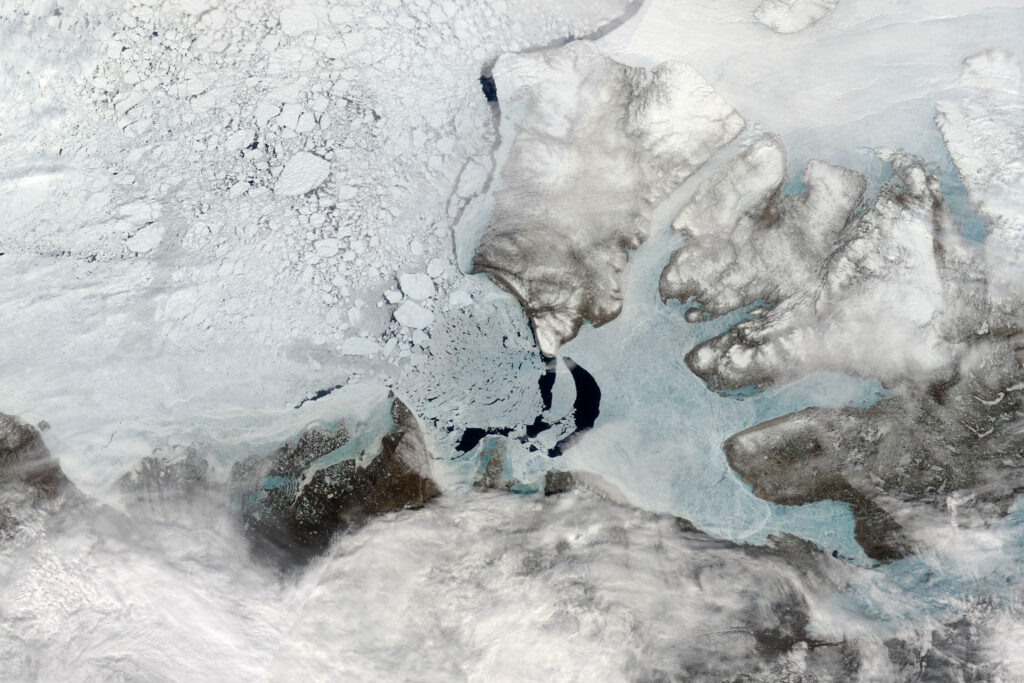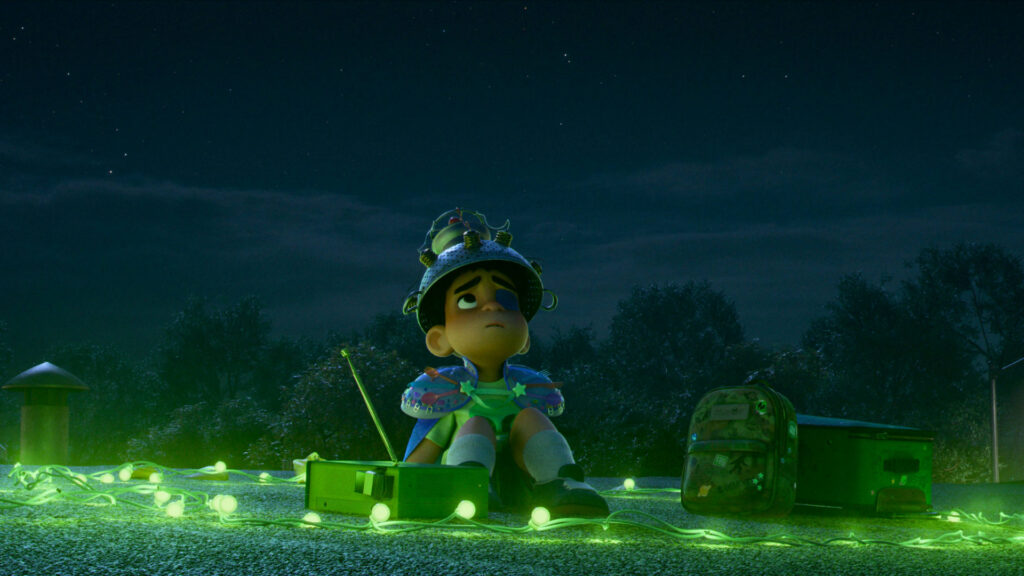If you live under a popular plane route, you’re probably no stranger to long, thin clouds in the sky. These are contrails emitted from airplanes.
Contrails, or condensation trails, are essentially human-made clouds; they are trails of condensed water vapor created by jet engines, according to the National Weather Service.
We most commonly see them behind planes at cruising altitude, but they can also be emitted by rockets.
Related: Wow! Rare rainbow contrails caught on camera (photos)
How do contrails form?
Contrails are created when the hot water vapor emitted by a jet engine after combustion cools and condenses in Earth’s atmosphere, according to the Environmental Protection Agency (EPA). The atmosphere’s temperature and humidity must be in just the right place for condensation to occur — the air must be cold with some humidity.
Contrails most commonly form at an airplane’s cruising altitude, between about 32,000 and 42,000 feet (10,000 to 13,000 meters) in the upper troposphere, per the Rocky Mountain Institute (RMI), because that’s where those conditions are found. Because the atmosphere is ever-changing, conditions might not be right for contrail formation at this altitude, which is why not all airplanes create contrails during every flight.
Contrail FAQs

Are contrails good or bad?
Generally speaking, contrails are neither good nor bad. They are simply a cloud created by jet engines under certain atmospheric conditions. That said, research suggests that contrails contribute to atmospheric warming and cooling, according to RMI, and the warming, in particular, is a problem for the planet.
Why are contrails bad for the environment?
Contrails that form at night or last into nighttime are the main contributors to atmospheric warming, per the Rocky Mountain Institute (RMI). Earth undergoes radiative cooling at night — heat radiates from the surface into space — but clouds like contrails can trap that heat.
Why are they called contrails?
Contrail is a portmanteau of “condensation” and “trail.” Contrails are trails of condensation created by jet engines at cruising altitude in the atmosphere.
Why do some planes not produce contrails?
All jet engines can potentially produce contrails, but specific atmospheric conditions are required for contrail formation, per the National Weather Service. The air needs to be both cool and humid — conditions that are most commonly found at cruising altitude.
How long do contrails last?

If a contrail forms behind a plane, it may last just seconds before dissipating, or it can last hours. It all depends on the atmospheric conditions at the time, according to the EPA; lower humidity leads to short-lived contrails, while higher humidity leads to persistent contrails. In the latter case, contrails may then be spread out by the wind, reaching a few miles wide and 650 to 1,300 feet (200 to 400 m) high. We can accurately predict whether a contrail will form based on the atmospheric temperature and humidity, the EPA says.
Are contrails dangerous to humans?
No, contrails are not directly dangerous to humans. There is a conspiracy theory that the government uses aircraft to disperse toxic chemicals into the atmosphere for a variety of nefarious reasons, creating chemical trails, or “chemtrails,” that look similar to contrails. However, there is no evidence to support this scenario.
“There’s no basis to the conspiracy, and scientists do not consider it as at all credible,” Steven Barrett, the H. N. Slater professor of aeronautics and astronautics at the Massachusetts Institute of Technology (MIT) and director of the MIT Laboratory for Aviation and the Environment, told Space.com
David Keith, a professor of applied physics at Harvard’s School of Engineering and Applied Sciences and a professor of public policy at the Harvard Kennedy School, provides a detailed debunking of the theory on his research group’s website. Keith studies climate science and technology, as well as public policy of solar geoengineering.
Environmental effects
Contrails are made from water vapor, just like clouds are. Although contrails and clouds are not outwardly dangerous to the environment, they do play a role in Earth’s temperature regulation via the greenhouse effect. Per NASA, clouds — including contrails — can have both cooling and warming effects on our planet. The sun emits thermal radiation that travels toward Earth. When solar radiation reaches thick clouds in Earth’s atmosphere, those clouds can reflect the radiation out into space, keeping the planet cool. But when the radiation does reach Earth’s surface, the planet itself reflects solar radiation out into space at night — unless there are thin clouds like contrails in the night sky. Those clouds can trap the reflected solar radiation and warm Earth.
The issue is not the short-lived contrails but rather the long-duration ones that extend over a large area and, in effect, become cirrus clouds, which are a major culprit in trapping heat on Earth, per the National Weather Service.
Several public and private entities are currently researching ways to mitigate contrails’ effect on the climate. For example, a study by NASA and DLR (the German Aerospace Center) revealed that sustainable aviation fuel can reduce contrail formation by 50% to 70%.
Contrail Q&A with an expert
We asked Steven Barrett, a professor of aeronautics and astronautics at MIT and the director of the MIT Laboratory for Aviation and the Environment, a few frequently asked questions about contrails. Barrett researches the ways aviation can achieve zero environmental impacts.

Steven Barrett is a professor of aeronautics and astronautics at MIT, an interim department head of the Aeronautics and Astronautics Department, and director of the MIT Laboratory for Aviation and the Environment.
Can all types of airplanes create contrails?
No, typically only jet aircraft fly high enough to be in the coldest part of the atmosphere where contrails can form. It’s typically coldest around 35,000 feet [11,000 m]. Below that, it gets warmer as you approach the ground, and above that, the atmosphere gets warmer due to the ozone layer absorbing UV radiation from the sun.
What atmospheric conditions affect the formation and longevity of contrails?
It has to be cold enough and humid enough for the water emitted by burning fuel to freeze into what is essentially an ice cloud. The contrails can last hours if those conditions persist, but lifetimes vary a great deal. Much of the time, a short-lived contrail forms where it’s not cold or humid enough for it to freeze. Often, you can see these short-lived contrails behind airplanes, but they’re not of concern when it comes to the climate.
Do contrails have any effect on humans? What about the climate?
They don’t have a direct impact on humans but do contribute to climate change and so have an indirect effect. Contrails reflect incoming sunlight and trap outgoing heat, with a net warming effect that’s similar to the warming from aviation’s CO2 emissions.
Additional resources
See photos of different types of contrails from the GLOBE (Global Learning and Observations to Benefit the Environment) Program. Learn how contrails affect the climate from the Yale School of the Environment. Discover how AI can mitigate contrails’ impact on climate in this article from Google.
Bibliography
Aircraft Contrails Factsheet. Environmental Protection Agency. Retrieved Aug. 18, 2023, from https://nepis.epa.gov/Exe/ZyPDF.cgi/00000LVU.PDF?Dockey=00000LVU.PDF
Cathcart, J. and Andrew Chen. Contrail Mitigation: A Collaborative Approach in the Face of Uncertainty. Rocky Mountain Institute. Retrieved Aug. 18, 2023, from https://rmi.org/contrail-mitigation-a-collaborative-approach-in-the-face-of-uncertainty/.
Clouds and Contrails. National Weather Service. Retrieved Aug. 18, 2023, from https://www.weather.gov/fgz/CloudsContrails
How Do Clouds Affect Earth’s Climate? NASA Climate Kids. Retrieved Aug. 18, 2023, from https://climatekids.nasa.gov/cloud-climate/
Keith, D. Chemtrails Conspiracy Theory. David Keith’s Research Group. Retrieved Aug. 18, 2023, from https://keith.seas.harvard.edu/chemtrails-conspiracy-theory
Weather in Action: Contrails. National Weather Service. Retrieved Aug. 18, 2023. https://www.weather.gov/bgm/WeatherInActionContrails


